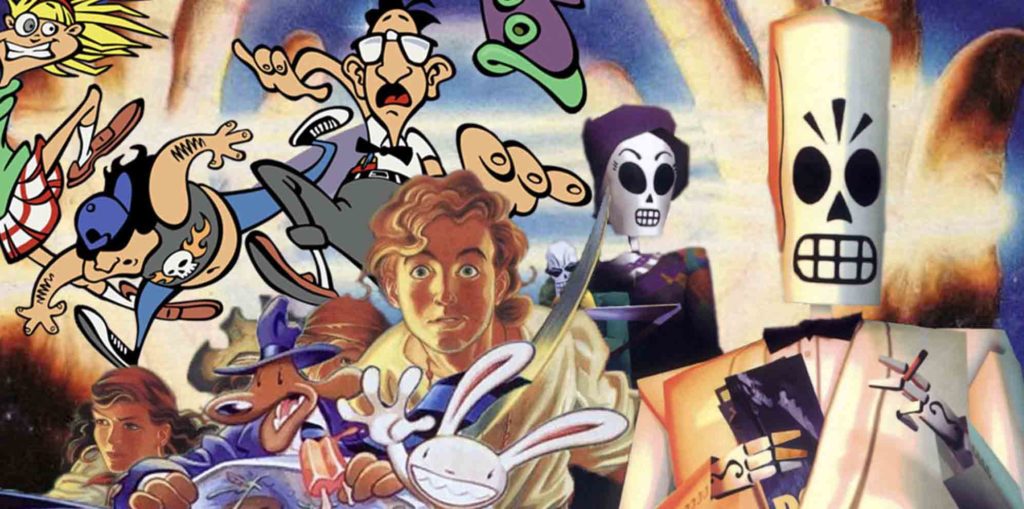
Adelaide
Oct 31 - Nov 2, 2025
Adelaide Showground



There have been growing reports since last year that Disney is developing a Pirates of the Caribbean reboot, picking up Deadpool 2 writers Rhett Reese and Paul Wernick to bring the franchise forward into a future without Johnny Depp.
But, with or without Depp, do we really need another Pirates film now, all of two years after the series’ most recent entry? A better use of Disney’s cash might be to turn these old Lucasfilm/LucasArts adventure games into movies and/or TV shows, obviously. Here’s why.
If Disney wants to make a film about pirates so badly but doesn’t want to make it about Pirates, they could always make one based on the video game series that was heavily inspired by the original Disneyland ride, and by which the initial PotC film was noticeably influenced itself: Monkey Island.
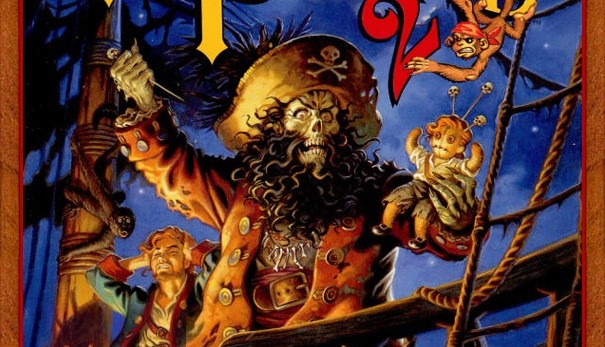
“Ye best start believin’ in ghost stories, Mr Threepwood. You’re in one.” (Pic: LucasArts)
The first in arguably one of the greatest adventure game series of all time, The Secret of Monkey Island (1990) follows aspiring swashbuckler Guybrush Threepwood as he lands among the rough-and-tumble scallywags of Melee Island to set out on a mission to become a genuine, bona fide pirate.
He is given three trials – mastery of sword, treasure hunting and thievery – by the local pirate leaders, which sets him on a path to uncovering the mystery of Monkey Island, a legendary isle of unknown location. The search for Monkey Island has claimed the life of many a seafarer, including the feared buccaneer LeChuck, who disappeared during a hunt for the fabled island in an effort to impress his would-be beau, Governor Elaine Marley – and is now said to haunt the area with his ghostly crew.
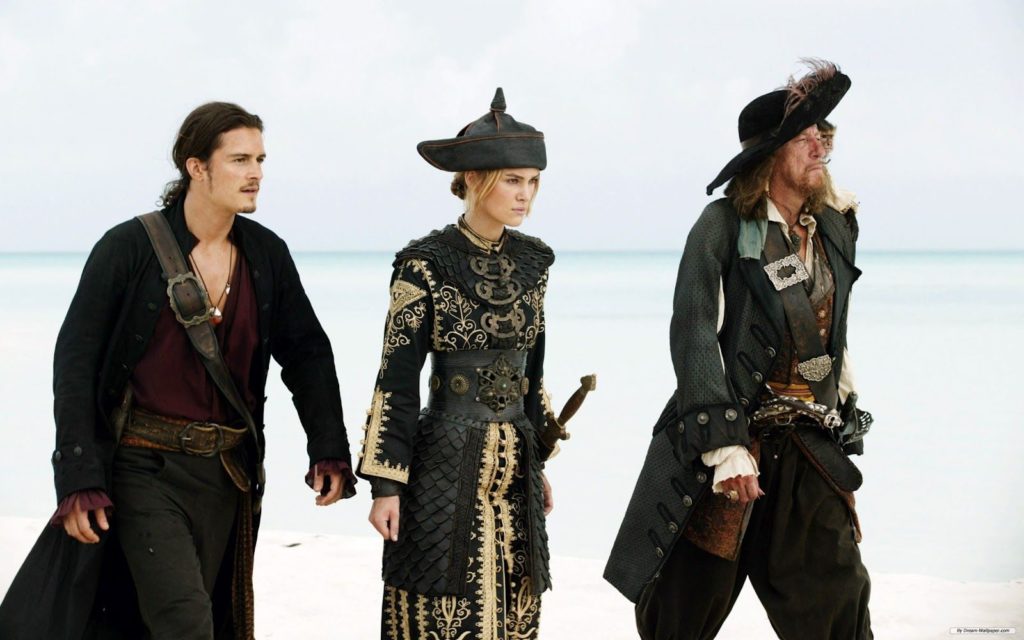
A plucky young wannabe, a feisty governor(’s daughter) and a ghost pirate. Check, check, and check. (Pic: Disney)
All the classic Pirates ingredients are there – buried treasure, voodoo priestesses, motley crews – but Secret of Monkey Island and its first two brilliant sequels, LeChuck’s Revenge and The Curse of Monkey Island, are set apart by their cast of characters, comedic foundations and irreverent story.
Secret’s grand scale, idyllic setting and potential to reuse some old Pirates sets should make it a natural choice to get a film series of its own, an idea that has lived in various levels of development hell for many years. Alongside LeChuck’s Revenge and The Curse of Monkey Island, it could be the start of a smart, stylish and self-contained trilogy of films that keeps the Pirates spirit alive and gives the old franchise room to breathe while opening up an incredibly influential game to a wider audience.
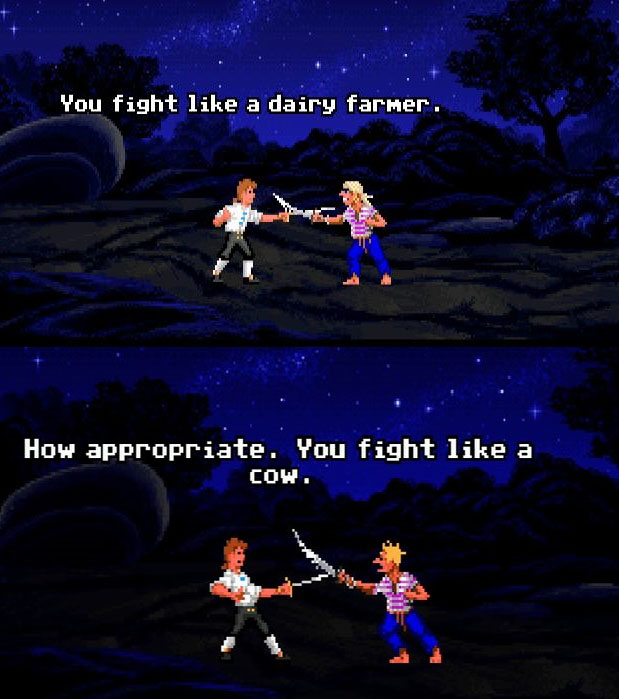
And maybe bring competitive insult sword-fighting to the masses. Finally. (Pic: LucasArts)
Away from the high seas, the surreal sci-fi comedy of Day of the Tentacle (DOTT, 1993) would also make for a cinematic good time in place of more Pirates of the Caribbean. DOTT is actually a sequel piece – to 1987’s Maniac Mansion – but shares little in common with its predecessor, which was much more inspired by old horror films in its tone and story than its lighter, wackier follow-up.
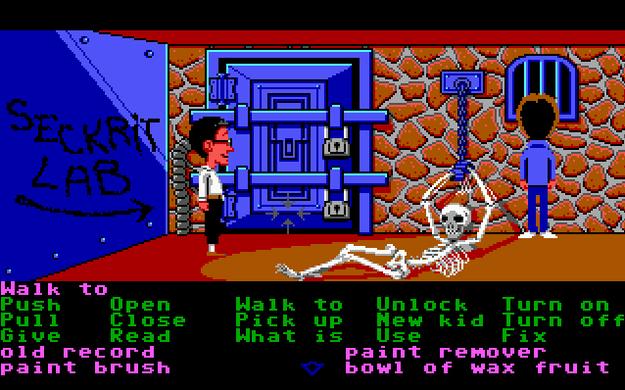
Much more. (Pic: LucasArts)
This presents one conceivable problem to an adaptation: making a DOTT movie is harder without making a Maniac Mansion film first, but the two’s connection is narratively weak yet fundamentally deep. For example: only one of the protagonists from Maniac Mansion is present in Day of the Tentacle: loveable mega-nerd Bernard. But his experiences in the first game, while not excessively referred to in DOTT, introduced him – and the player – to the mad, bad Edison family, led by patriarch Dr Fred, who is aided by his wife, Edna, and son, ‘Weird Ed’. And, more importantly, it introduced his pet tentacles, mild-mannered Green and evil Purple.
So, you see the predicament. But, rather than Alien/Aliens-ing this potential film franchise, it would probably be easier to merge the two tales into one, making Bernard a first-time visitor to the Edison mansion alongside his DOTT roommates, hyperactive med student Laverne and big-boned stoner-rocker Hoagie, where they would be introduced to the family for the first time and – as at DOTT’s opening cinematic – find out that one of their pet sentient tentacles drank toxic sewage water, grew arms and wants to take over the world now.
In an effort to stop Purple from following through on his threats of global domination, Dr Fred has Bernard, Hoagie and Laverne test out his experimental time machine, the Chron-O-John (fashioned from portable toilets, because of course), in an effort to send them back in time to just before Purple’s mutation and prevent the enslavement of the human race.
Instead, a cheap component causes the machine to malfunction, sending Hoagie 200 years back in time while Laverne ends up in the tentacle-dominated distant future. With Bernard in the present, the three work together across eras using the Chron-O-Johns to stop Purple, fix time and get home. Heck yeah.
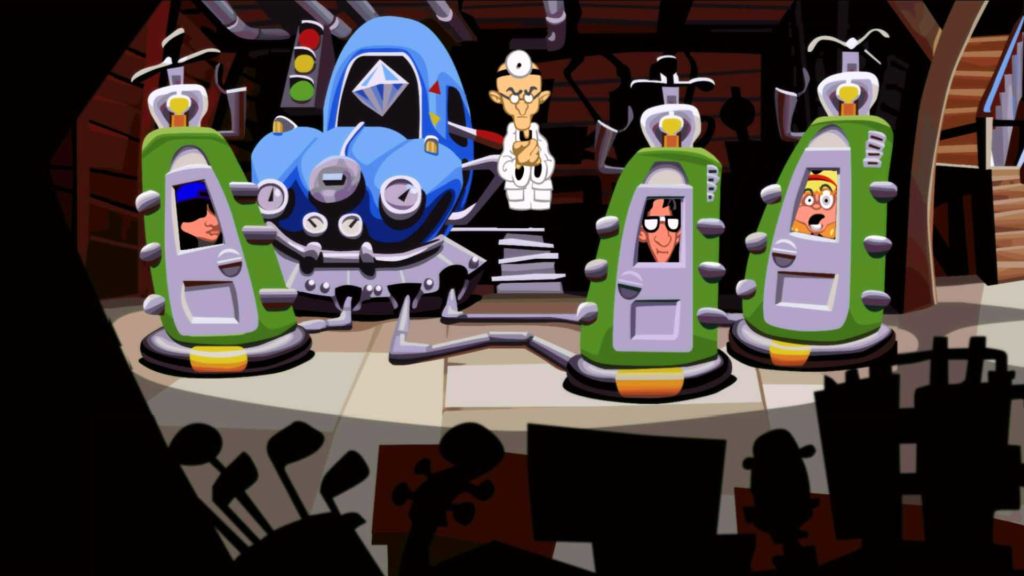
To paraphrase Doc Brown, if you’re going to build a time machine, why not do it with some style? (Pic: Double Fine)
A big part of Day of the Tentacle’s appeal was its distinct art style, so it’s a film that would arguably work even better in animated form than as a live-action effort but, either way, this one could be a genuinely fun superscience-fuelled romp through history and our only chance to see an exploding cigar blow George Washington’s teeth out on the big screen.
If we’re being pedantic, Sam & Max isn’t truly an original LucasArts property. But this one is, like, peak all-ages madcap fun that would be perfect summer holiday entertainment fodder, so hear me out.
Sam and Max – a big, loveable anthropomorphic dog in a suit and hat and his unhinged “hyperkinetic rabbit thingy” friend, who together solve mysteries as the Freelance Police – started life as an independent comic book, created by writer/animator Steve Purcell in 1987. As fate would have it, though, Purcell eventually started working on adventure games at LucasArts and, in 1992, the company offered to make one based on his popular underground series.
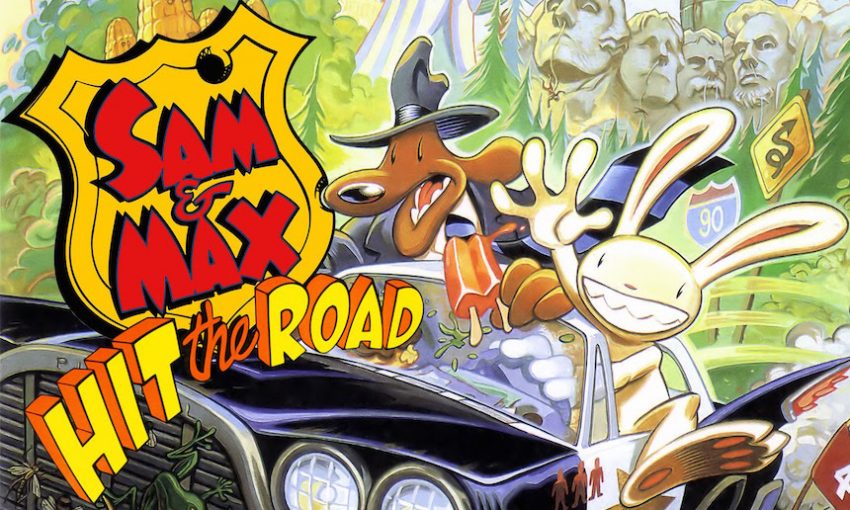
Because, honestly, WHY WOULDN’T YOU? (Pic: LucasArts)
While that first game, Sam & Max Hit the Road, wasn’t the characters’ first appearance, it was definitely their breakthrough moment on a broad scale. Unlike their peers on this list, Sam and Max have been the subject of several adaptations already, including a short-lived animated TV series and a trilogy of new games released by LucasArts’ spiritual successor, Telltale Games, between 2006 and 2010.
So, yes, if you want to be a total killjoy, Sam & Max has arguably already been given ample post-LucasArts opportunities to live on. But, at the same time, this is a buddy-comedy series about a talking dog and rabbit thingy who fight crime and go on bizarre road trips together. Also, Bigfoot is there sometimes.
I mean… do I really need to sell this more? This should be a license to print money. Seriously, why haven’t they done this yet?
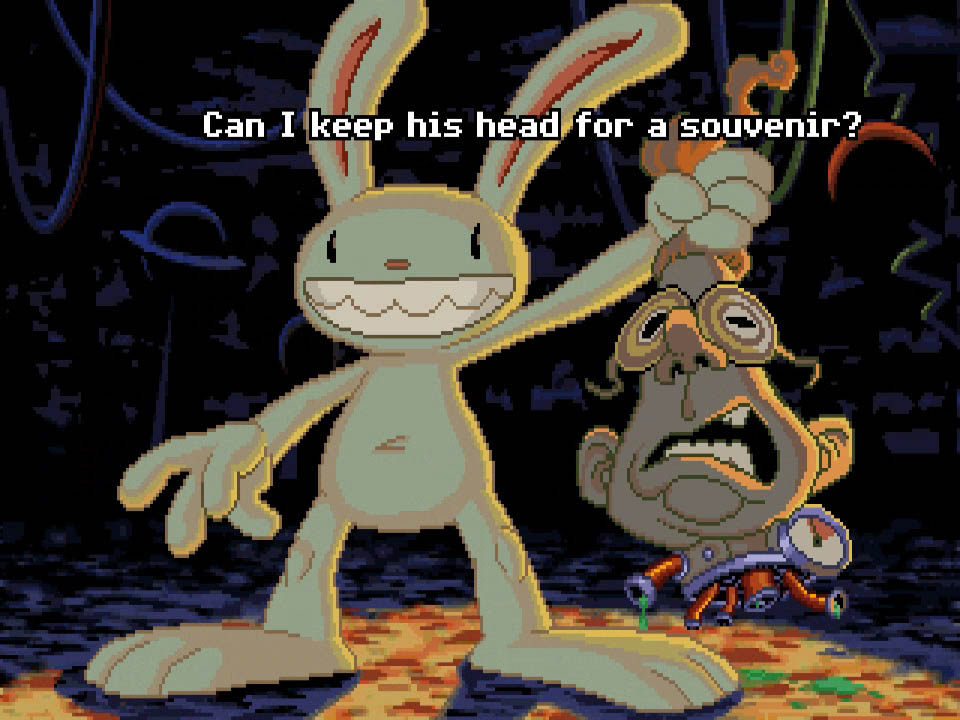
Oh, right. Max is terrifying. (Pic: LucasArts)
Man, Loom was a weird game, even by 1990 standards. Although released during what could be billed as LucasArts’ Golden Age, Loom stands apart from its contemporaries on several levels, not least of all thanks to its total eschewal of the standard verb-based interaction system that dominated the genre at the time for a music-based one. Yeah, that’s right; Ocarina of Time wasn’t as original as you thought.
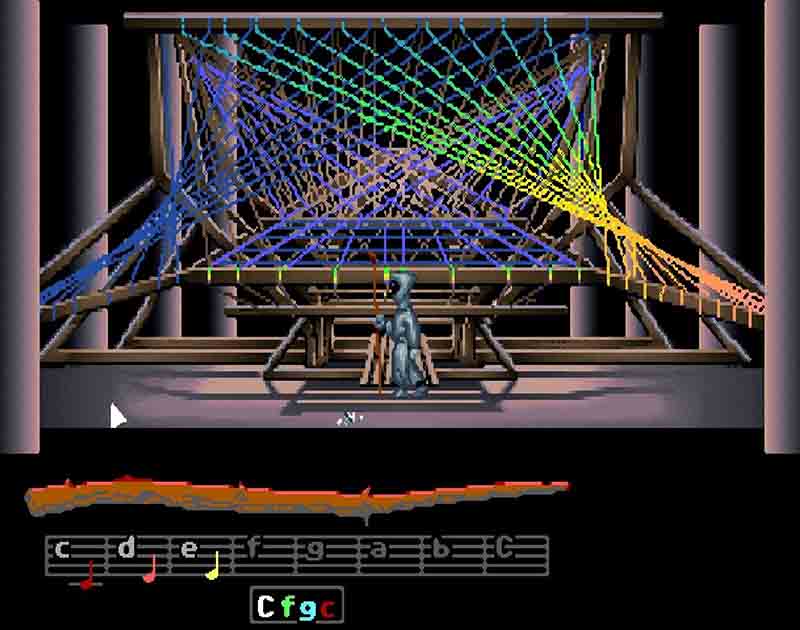
“Hey! Listen! Loom did it first!” (Pic: LucasArts/Eurogamer)
That’s not even considering its half-hour-long, world-building audio intro, or its fantastical, reality-warping concept, and futuristic setting and striking visuals, all of which would lend themselves to a psychedelic cinematic sci-fi experience for the ages. Or a Lynchian nightmare car-wreck. Either/or. It’s… kind of hard to tell, honestly.
Created by decorated game developer Brian Moriarty, Loom tells the story of misbegotten orphan Bobbin Threadbare, who, on his 17th birthday, is hauled in front of the Elders of the Guild of Weavers – one of several guilds that arose in an age long past as humans sought to extend their control over nature – for them to decide his fate. Bobbin’s very existence – an accident that arose from the introduction of a grey thread into the great loom, through which the guild had learnt to alter the fabric of reality – is an anomaly, and the Elders are concerned his presence will throw, or already has thrown, the ‘pattern’ into disarray.
Then, they immediately turn the woman who raised him into a swan, before they all get turned into swans themselves by another swan, leaving Bobbin (and the player) to figure out just what the heck is going on, why everybody’s a bird suddenly, and what that has to do with the mysterious Third Shadow that threatens to cloak the world.
Are… are you still with me? Because I’m not even sure I’m still with me. Obviously, Loom isn’t the most straightforward game LucasArts ever produced, but it was certainly one of the most imaginative and ambitious, including everything from undead armies and chaos entities to Greek mythology, step-matricide – and, oh, yeah, so many swans.
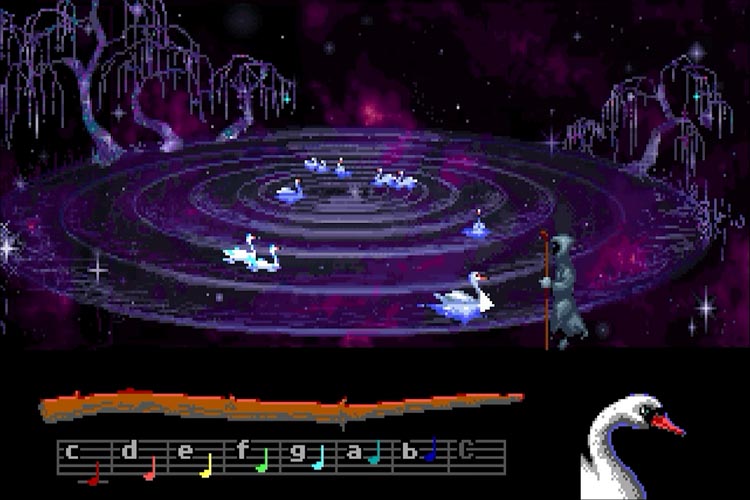
I am not kidding. (Pic: LucasArts)
Like I said: a cinema/TV adaptation would be a masterpiece or car crash. There would absolutely be no middle ground.
In a perfect world, Grim Fandango would be a prestige TV show based on a four-season masterplan. Sure, you could cover the game’s epic story in a single movie (especially given its lamentable lack of a sequel to this day), but the TV plan is kind of perfect. Not least of all, it would give a Grim Fandango series the ability to ably reflect Manny Calavera’s four-year journey through the Land of the Dead as he seeks to uncover the corruption at the Department of Death that has been robbing ostensible saints of their first-class ticket to the Ninth Underworld and their eternal rest.
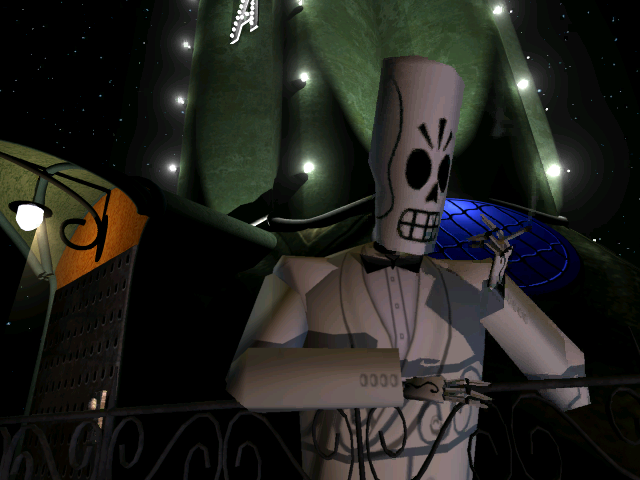
It helps that Manny is pretty much the company’s suavest main character, too. (Pic: LucasArts)
LucasArts’ first venture into 3D gaming and their second-last adventure release before the company became pretty much a Star Wars-only house, Grim Fandango was a double-edged sword for the ailing genre. Critically acclaimed but commercially underperforming, the game has maintained a dedicated cult following more than 20 years after its initial release, its unique world and inventive story helping it persist long after everyone forgot who Bobbin Threadbare was.
As mentioned, the game’s protagonist is Manny Calavera, an ever-suffering reaper/travel agent at the Land of the Dead’s Department of Death, dispensing various packages to newly arrived souls to help them navigate their journey through the underworld. Those who behaved poorly or immorally in life generally qualify for low-level offerings, such as the ‘Excelsior’ – a walking stick with a compass in the handle – which tend to only marginally expedite the perilous pilgrimage to the next life. Make moral choices and behave well, however, and you’re due a ticket on the Number Nine, a luxury high-speed train that rockets saintly souls to their next destination in a mere four minutes.
Stuck in a dead-end job working off a debt he’s not sure will ever be lifted, and suffering from a streak of lousy souls, Manny rigs the system – and, with the assistance of affable demon Glottis, a company car – to beat department superstar Domino Hurley to a ~primo~ corpse who he is sure he’ll be able to get on that sweet, sweet railway to heaven. However, when he’s unable to match the soul, a virtuous woman named Mercedes Colomar (or Meche for short), to her well-earned ticket to paradise – and she consequently disappears – Manny sets off on his own four-year quest through the Land of the Dead to find Meche and set things right.
Along the way, he meets an array of colourful characters, including the revolutionary Salvador “Sal” Limones, who opens Manny’s eyes to the shady operations plaguing the Department of Death and sets him on a path to proving that Domino and his boss have been robbing people of their rightful place on the Number Nine for their own profiteering purposes.
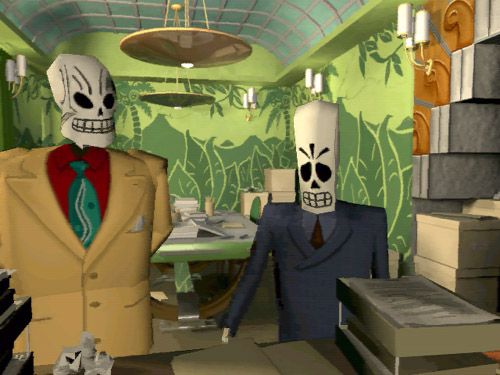
I mean… duh. Just look at that smug grin. Man, Domino was the worst. (Pic: LucasArts)
It is, simply, a stunningly put-together tale of death, mystery, noir, jazz, and Central American lore and mythology, delivered in LucasArts’ trademark tongue-in-cheek style, with the comedic undertones softening the story’s darker edges. If you can look me in the eye and tell me that this, done right, wouldn’t make an amazing TV show, well, then, in the immortal words of Manny himself: Glottis, are you loco?
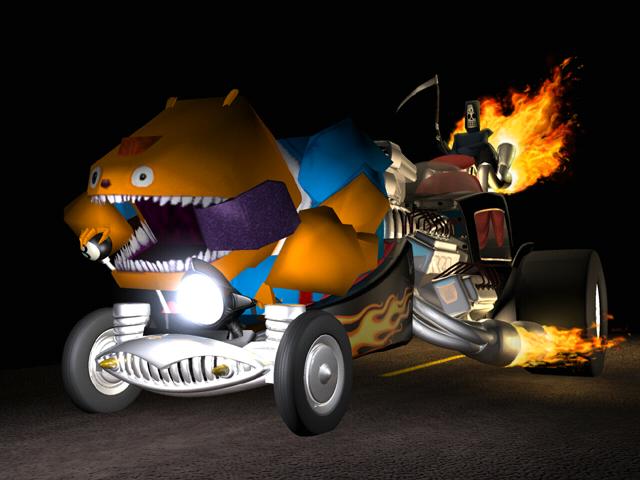
To answer my own question: Yes. Obviously. (Pic: LucasArts)






